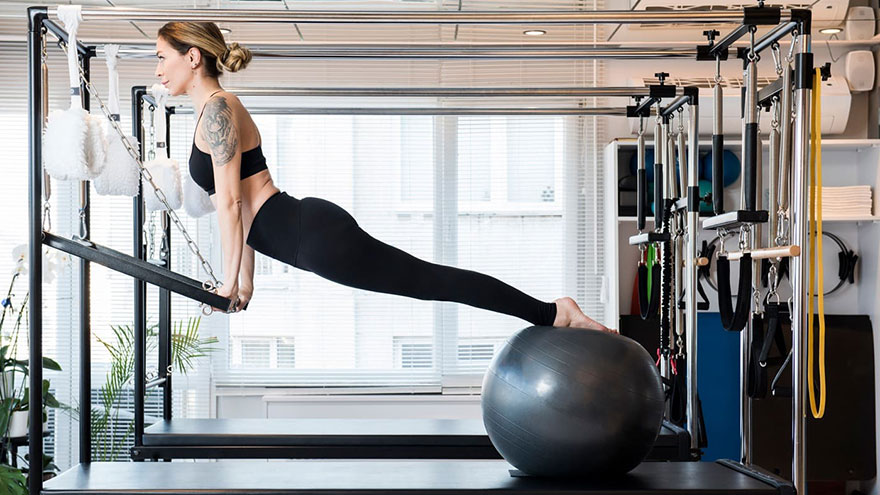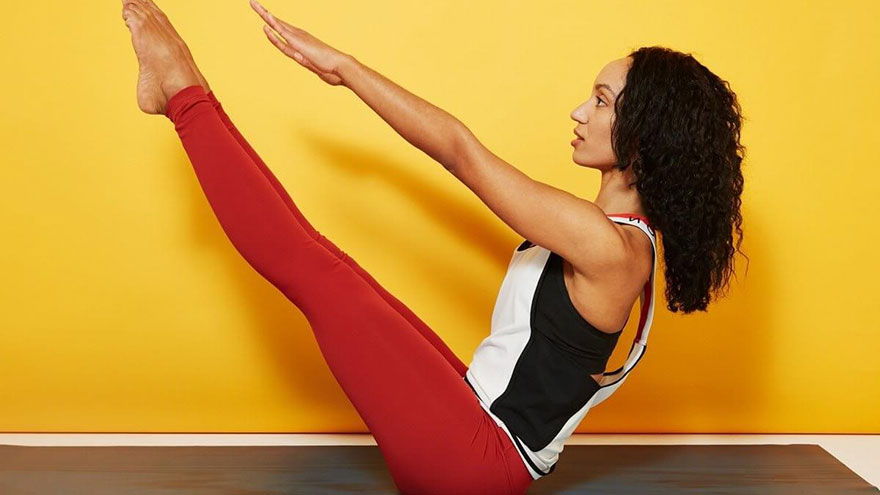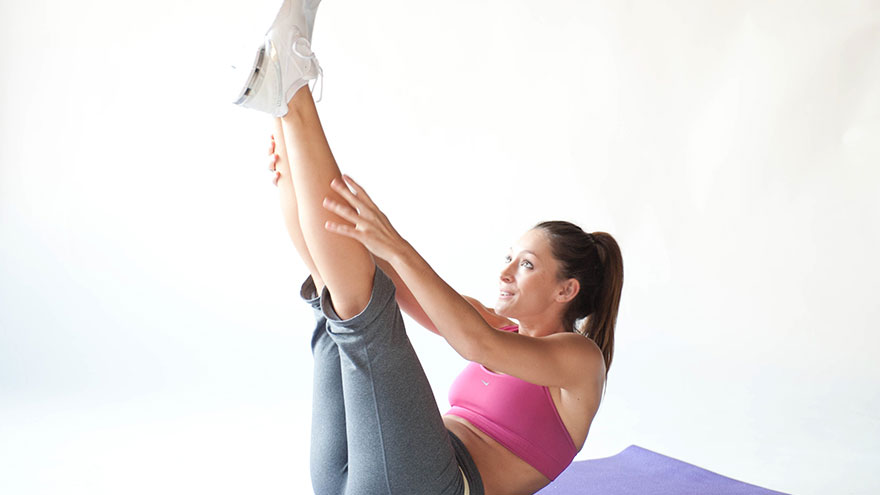Pilates Routine With Weights
In recent years, Pilates has become a popular and effective way to tone up, become more flexible and get in better shape overall. Pilates exercises work especially well for strengthening core muscles in the abdomen and back, and they offer a low-impact option for improving mobility and balance. Pilates exercises are gentle on the joints, but this shouldn’t be confused with being easy. Pilates is still a challenging workout, and adding weights to your routine will force your muscles to work even harder. Light hand weights from 1 to 5 pounds will increase the intensity of your Pilates workout, giving you even more dramatic results with just a few simple changes to your routine.
Arms and Shoulders

The arms and shoulders especially can benefit from the addition of dumbbells to your Pilates program, with your biceps, triceps and deltoids getting even more of a workout. A standing chest press works all these muscle groups. Start by standing tall with your legs together and holding the weights at your sides. Lift the weights to shoulder height, with your arms extended straight in front of you, and then open your arms wide, keeping them straight while holding the weights to the side. Bring them back together and lower your arms before repeating. Another move that targets your shoulders in particular is the seated spine twist, where the weights build strength and endurance in your deltoids as you rotate your torso with your arms extended the side. To perform this exercise, sit tall with your legs extended in front of you and your feet flexed. Gripping the weights in each hand, open your arms to the side and twist at the waist, keeping your hips straight.
Abs and Back

Pilates is all about core strength, so of course your abs and back will get an intense workout. Adding weights to classic moves, like the hundred or the roll up, will intensify these exercises even more, changing your center of gravity and increasing resistance. The hundred is done by lying on the floor on your back and lifting your legs, keeping them either straight or bent, then raising your head and shoulders off the mat with your arms extended off the floor by your hips. The roll up also starts from a prone position and is done similar to a sit-up, but here, you keep your legs straight, arms extended and back rounded.
Legs and Butt

Lunges and lifts are also made more challenging with weights, and these exercises will focus on your quads, hamstrings and glute muscles. Up the intensity of your front lunge by holding a weight in each hand while you perform the exercise. From a standing position, lunge forward with one leg, sinking toward the ground while simultaneously lifting your arms out to the sides until they reach shoulder height. Hold the position for two counts, then return to the starting position and perform the exercise with the opposite leg. A front leg lift is also done from a standing position. From there, lift one leg to the front and raise both hands overhead while holding the weights.
Weights

There are many different Pilates and Pilates-inspired exercises to try, and you can add hand weights to virtually any of them that don’t require use of your hands. In addition to dumbbells, kettlebells and medicine balls can also be incorporated into your routine to add another form of resistance. It is important to select a weight that is comfortable and not too heavy. If a weight restricts your movement or makes you unable to maintain proper form, it’s too heavy. Pilates is a dynamic workout, so maintaining your full range of mobility is vital.
You Might Also Like :: How to Dance in Workouts

